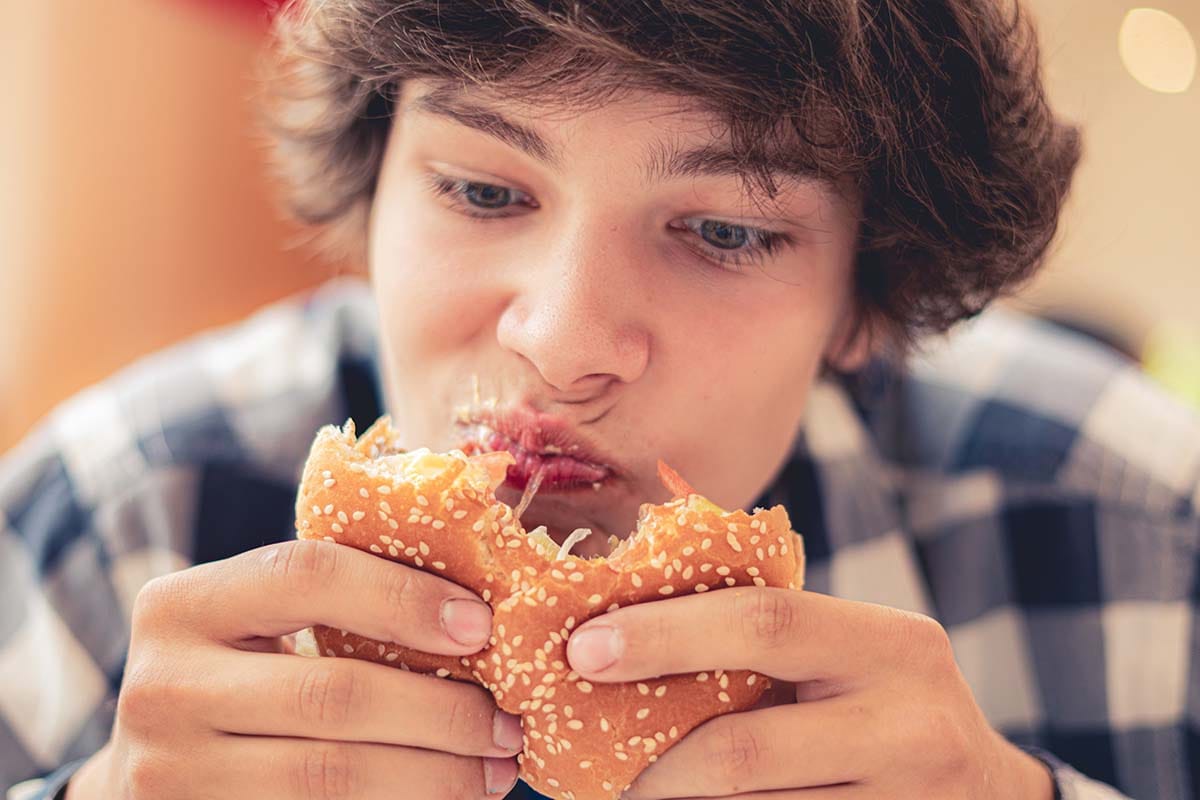Eating disorders in teens are prevalent. Teens are surrounded by so much pressure to be thin and fit, which can lead to dangerous behaviors. Many types of eating disorders can cause serious physical and emotional harm. It is vital to find your child treatment as soon as possible. If you are concerned about your teen developing an eating disorder, Foothills at Red Oak Recovery offers disordered eating treatment for teens. Reach out to our informed and caring staff at 866.300.5275 today to learn more about how we can help treat your teens’ disordered eating.
Types of Eating Disorders
Eating disorders come in many different forms, and it is important to be aware of the warning signs for each type. The most common types include:
Anorexia Nervosa
A person with anorexia restricts their food intake and has a fear of gaining weight, leading to extreme weight loss. This can also involve excessive exercise and distorted body image.
Bulimia Nervosa
Bulimia is a well-known disorder that usually develops in adolescence. When it occurs, those with bulimia eat enormous amounts of food. Afterward, they purge to compensate for how many calories they consume. There are serious side effects of this condition, such as:
- Sore throat
- Swollen salivary glands
- Tooth decay, dehydration, and other medical problems
In severe cases, an imbalance of the body’s electrolytes could lead to a heart attack or stroke.
Binge-Eating Disorder
Binge-eating disorder is one of the more common eating disorders. It happens when someone eats a tremendous amount of food in one sitting. Unlike bulimia or anorexia, there is no restriction on the diet or purging following a binge. People with this disorder tend to be overweight.
Rumination Disorder
Rumination disorder is a new kind of eating disorder that has only recently been recognized. This is when a person regurgitates their food. They may eat, regurgitate, swallow again or spit it out. This usually happens shortly after a meal, within a half-hour or so.
While certain medical conditions make this happen involuntarily, the difference for people with rumination disorder is that they have chosen to do this. Adults with this disease may limit how much they eat, especially if they are working, at school, or otherwise in public.
Restrictive/Avoidant Food Intake Disorder
With ARFID, the people who are usually affected are seven years old or younger. It typically develops in infancy and means that the individual is not interested in eating because of a lack of interest or distaste for the food presented to them. For example, they may not like food of certain colors, temperatures, smells, tastes, or textures.
Seek Disordered Eating Treatment at Foothills at Red Oak Today
Now that you know the types of eating disorders, you should consider if your teen may need treatment. At Foothills at Red Oak Recovery, we can help with eating disorders. Whether a teen is binge eating or struggling with anorexia, we have the experience needed to help them adapt and learn to eat in a healthy manner.
Our program serves teen males between the ages of 14 and 17 who may need specialized help with eating disorders, psychological concerns, or substance use disorders. Contact us by calling us at 866.300.5275 or using our online form to learn more about how we can help. A brighter future is waiting for your teen, and we are here to support them on their journey.









